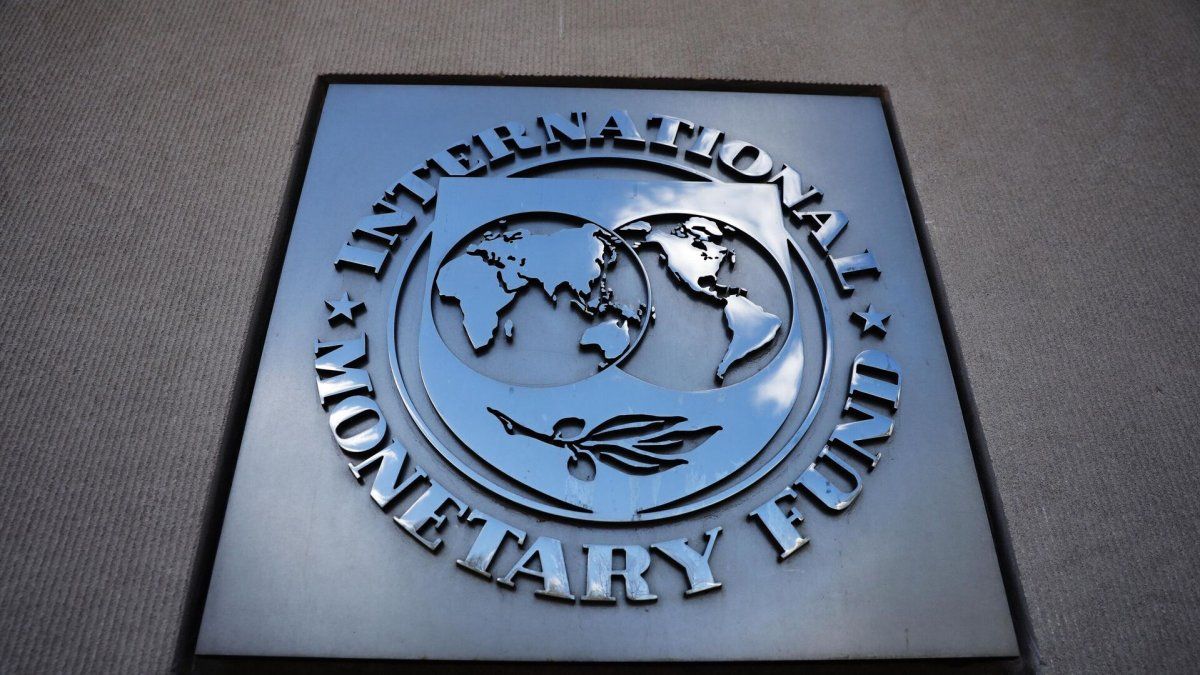In this sense, the IMF rescues the new management: “Faced with a deepening crisis, the new economic team began to adopt bold measures to stabilize the economy and rebuild policy credibility.
He also warns that: “Even with a tightening of macroeconomic policies, rebuilding policy credibility and bringing down inflation will be a challenge, especially given lingering doubts about persistent differences over the direction of economic policies within the ruling coalition.”
“Persistent high inflation and slower growth could exacerbate social unrest and weaken political support for the program. These risks could increase before the presidential elections of October 2023in case of pressures on spending and wages to intensifyand difficulties arise to implement the planned reforms of subsidies and social assistance and to ensure the renewal rates of the internal debt”.
inflationary pressures
Although the report assumes that this year inflation will reach around 85% and that in 2023 it will be 60%, it nevertheless warns that:
“Underlying pressures remain strong (core inflation stood at 6.8% m/m) and inflation expectations they remain unanchored. Meanwhile, the demand for real money has contracted further, with the monetary base reaching 5% of GDP, its lowest levels since 2023.
“Inflation is projected to fall very gradually over the rest of this year and next, from around 5% by the end of 2022 to around 3.5% by the end of 2023.” Goal for this year that is below the latest estimates of the REM.
In what is inferred as a gradual stabilization program, the agency projects high inflation for the coming years: it would be 44% per year in 2024, 40% in 2025, 35% in 2026 and 30% in 2027.
back dollar
The report notes that although the official rate of devaluation has increased“remains below inflation, leading to a further appreciation of the real exchange rate” that it calculates at up to an additional 12% from the end of 2021.
Meanwhile, in relation to reservations, the staff warns that: “Net international reserves after excluding swap lines and reserves on foreign currency deposits are around US$2 billion (equivalent to just under a month of imports), with liquid reserves in negative territory.”
For the program period, projected accumulated trade surpluses ($39 billion) and net foreign investment inflows ($27 billion) are expected to more than offset net external debt obligations and allow for an accumulation of international reserves (program definition) of approximately US$ 15 billion.
Regarding the debtthe work indicates that “Argentina’s public debt is sustainable but not with high probability.
The IMF, whose program seeks to guarantee the repayment of the loan, warns that these debt obligations with the “They would still be very large in the medium term, around 6.2% of exports, or 11% of gross reserves.”
tourism spending
One of the points highlighted by the work is the outflow of foreign currency from tourism. In this regard, the economic team is about to announce a differential dollar to make spending abroad more expensive. In this sense, the IMF warns: “The net tourism deficit through August jumped to $2.7bn (compared with $900m in 2021), while the non-tourism services deficit widened to $5.9bn (up 130% from 2021), mainly driven by imports of services related to imports of goods”.
In the same sense, it focuses on the strong growth of imports: “Imports of non-energy goods increased considerably, reflecting in part a strong growth in the volume of imports (16.6%, y/y), well above real GDP growth, as a stronger real exchange rate coupled with a high and widening currency gap added to unusually strong imports. growth elasticity.
Adjustment
The report insists on the need to carry out the adjustment in public spending that, in an election year, some specialists -and even the Fund itself- fear will be very difficult:
“The underlying adjustment is estimated at 0.9% of GDP. The policies that support the fiscal adjustment in 2023 include: (i) reductions in subsidies (0.5% of GDP), mainly in the energy sector, and also with some savings in the water and transportation sectors; (iii) the rationalization of social assistance (0.7% of GDP), reflecting a reversal of emergency bonuses and efforts to reduce benefit overlap and incentivize labor market entry; Y (iii) continued restrictions on wages from the public sector (including through a freeze on public sector hiring), transfers to provinces and state companies, and adherence to the pension indexation formula.”
“Although it is expected that pension spending declines as a percentage of GDP in 2023, in line with the indexation formula linked to past growth in wages and payroll taxes, Spending is expected to recover in the medium term and continue to represent 35-40% of total federal government spending.”
Rates
The work of the staff considers that “Although the segmentation scheme represents an important step forward in the better targeting of energy subsidies” although it requests that “It could be further strengthened in the future.”
For this it is proposed: “Improve the database. The policy is supported by a new database (RASE) of energy consumers who self-declare their income and assets” with the purpose of reduce “the number of unregistered consumers”
Another aspect that he points out is linking fees to costs. “For users who continue to be subsidized, energy price increases could be linked to costs rather than wages, potentially leading to more ambitious improvements in cost recovery.”
And he questions the current consumption ceilings from which he begins to pay without subsidies (400 kw) and proposes: “Less generous consumption caps. The consumption ceiling for middle-income consumers is quite generous and could be lowered in the future, while a ceiling for low-income consumers could also be introduced to encourage energy efficiency.”
It also considers that subsidies are granted to a very large population: “the composition of the three groups could also be reconsidered (ie the proportion of users in the low-income category remains relatively large)”.
Internal debt accumulation
Regarding the internal debt, the work indicates that “increased maturity and currency risks and led to a notable build-up of write-downs due before the presidential election (June-Aug 2023). Recommends in this regard: build cash reserves (including by increasing the frequency of emissions in the short term) and resume issuance of longer-dated securities as that the conditions allow to promote the renovations until 2024”.
To achieve this, he maintains that it is necessary to: “expand the universe of investors”; implement a well-coordinated annual borrowing plan; and develop a medium-term debt strategy.
And, it conditions that the achievement of the goals of net financing in pesos (of about 2.5% of GDP in 2023) it will depend ultimately of the firm implementation of the fiscal consolidation plan and the continued and decisive application of the improved monetary and exchange rate policy framework”.
The Fund team proposes “an upturn in official financing and a somewhat higher internal debt renewal rate of 130% (vs. 125% in the first revision) to support a reduction in the monetary financing of the fiscal deficit (from 0.8% of GDP in 2022 to no more than 0.6% of GDP in 2023).”
Continuing a concept from previous reports regarding the cups, notes that “Domestic real interest rates will gradually increase from 2% in 2022 to 4.5% by 2028.”
Pending reforms
The report states that different studies will be carried out to address structural reforms.
Retirement System
“A study led by the Ministry of Labor is being carried out to identify options for reforming the pension system.” This work should be completed by the end of December 2022.
Taxes
Plan to strengthen tax revenue compliance (end 2022)
Energy
Strategy to improve the sustainability and efficiency of the energy sector (end 2022);
real estate reassessment
End of March 2023.
Social assistance programs
Evaluation for the purposes of achieving a better allocation of spending (March 2023)
currency controls
A roadmap to phase out foreign exchange controls (end June 2023)
Evasion control
Complete a comprehensive compliance gap analysis for key taxes and develop an action plan for segmentation of the taxpayer base.” This work was not completed by the end of August 2022 and the target was reset at the end of December.
On tax issues, the Fund admits that it is working on:
- Review “costly corporate tax incentives”;
- Strengthen property tax collection,
- Improve taxes on personal wealth (personal assets),
- Improve the tax administration database by connecting provincial cadastres and property tax records with federal taxpayer identification numbers, initially for the Greater Buenos Aires Metropolitan Area.”
Source: Ambito
David William is a talented author who has made a name for himself in the world of writing. He is a professional author who writes on a wide range of topics, from general interest to opinion news. David is currently working as a writer at 24 hours worlds where he brings his unique perspective and in-depth research to his articles, making them both informative and engaging.




